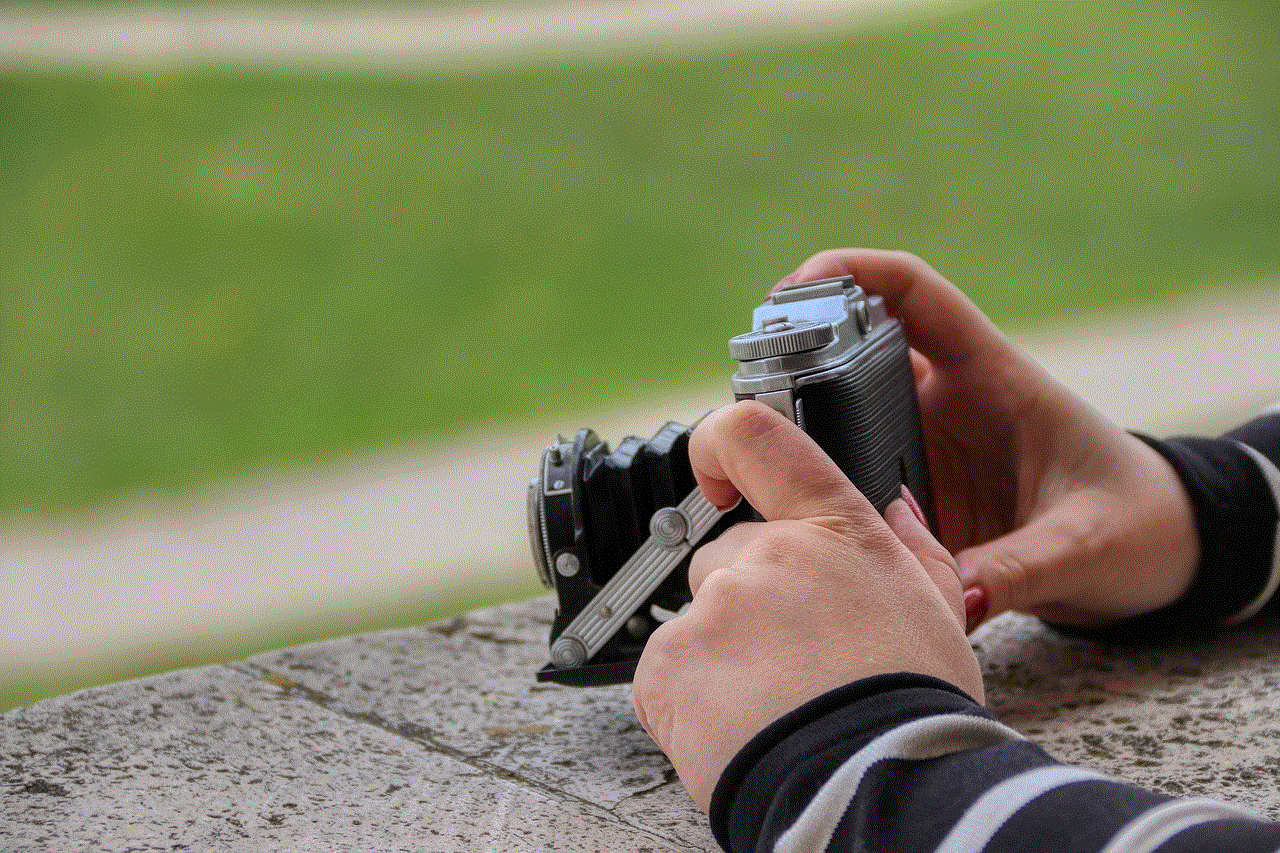iphone turn off app library
Title: How to turn off App Library on iPhone: A Step-by-Step Guide
Introduction (150 words):
The App Library is a new feature introduced in iOS 14 that organizes and categorizes your apps automatically. While it can be helpful for some users, others may prefer to disable it and stick to the traditional home screen layout. If you’re one of those users looking to turn off the App Library on your iPhone, you’ve come to the right place. In this article, we will guide you through the process step-by-step.
Paragraph 1 (200 words):
The App Library was designed by Apple to provide iPhone users with a more organized way to access and manage apps. It automatically sorts your apps into categories and displays them in a separate section at the end of your home screen pages. While this feature can be useful for those who have many apps installed on their device, it may not be everyone’s cup of tea.
Paragraph 2 (250 words):
To turn off the App Library on your iPhone, you’ll need to follow a few simple steps. First, ensure that your device is running on iOS 14 or later, as this feature is not available on older versions of the operating system. Then, follow the steps outlined below:
Step 1: Unlock your iPhone and go to the home screen.
Step 2: Swipe left until you reach the last home screen page.
Step 3: Now, keep swiping left until you reach the App Library screen.
Step 4: Once you’re on the App Library screen, tap and hold on any empty space.
Step 5: This will bring up the “Edit Home Screen” option. Tap on it.
Paragraph 3 (200 words):
When you tap on “Edit Home Screen,” you’ll notice that all your app icons start to jiggle, indicating that you’re in edit mode. This mode allows you to rearrange app icons, delete apps, and manage widgets. However, what we’re interested in is disabling the App Library, so let’s move on to the next step.
Step 6: Swipe left on the App Library screen until you reach the last page.
Step 7: Here, you’ll see a toggle switch labeled “Keep on Home Screen.” Toggle it off.
Paragraph 4 (250 words):
By toggling off the “Keep on Home Screen” option, you’re effectively turning off the App Library on your iPhone. This means that all your app icons will now be displayed on the home screen itself, just like in previous iOS versions. This can be particularly useful if you prefer a clutter-free home screen or if you have a specific organization system in place.
Paragraph 5 (200 words):
Now that you’ve disabled the App Library, you might be wondering if there’s any way to access your apps without going through multiple home screen pages. Fortunately, there is. When you disable the App Library, a new feature called “App Library Only” appears. This feature allows you to hide all your home screen pages and access your apps exclusively through the App Library.
Paragraph 6 (250 words):
To enable the “App Library Only” feature, follow these steps:
Step 1: Go to the home screen and swipe left until you reach the last home screen page.
Step 2: Tap and hold on any empty space to enter edit mode.
Step 3: Tap on the page indicator dots at the bottom of the screen.
Step 4: From the page overview screen, tap on the checkmark icon labeled “App Library Only.”
Step 5: Tap “Done” to save your changes.
Paragraph 7 (200 words):
Once you’ve enabled the “App Library Only” feature, all your home screen pages will be hidden, and you’ll only see the App Library when you swipe right from the last home screen page. This can provide a more streamlined and simplified experience, especially if you have a large number of apps installed on your device.
Paragraph 8 (250 words):
It’s important to note that even if you disable the App Library or enable the “App Library Only” feature, all your apps will still be accessible through the Search bar at the top of the home screen. Simply swipe down on the home screen and start typing the name of the app you want to open. The Search feature will display relevant results, including apps, contacts, and more.
Paragraph 9 (200 words):
If you ever decide to re-enable the App Library, you can do so by following the same steps outlined above. When you reach the “Edit Home Screen” mode, swipe left until you reach the App Library screen. Then, toggle on the “Keep on Home Screen” option. This will enable the App Library again, and your apps will be sorted into categories.
Conclusion (150 words):
Disabling the App Library on your iPhone can be a personal preference based on your individual usage and organizational habits. Whether you prefer a clutter-free home screen or enjoy the convenience of the traditional layout, knowing how to turn off the App Library gives you the freedom to customize your iPhone experience. Remember that you can always re-enable the App Library if you change your mind. Explore the various features and options available on your iPhone to make it truly yours.
what do trackers on cars look like
Title: Exploring the World of Vehicle Trackers: How They Work and What They Look Like
Introduction:
In today’s fast-paced world, vehicle theft is a rising concern for car owners. To combat this issue, innovative technologies have been developed, including vehicle trackers. These small devices provide real-time location tracking and various other features to enhance vehicle security. In this article, we will delve into the world of vehicle trackers, exploring how they work and what they look like, ensuring you have a better understanding of these essential tools.
1. Understanding Vehicle Trackers:
Vehicle trackers, also known as car tracking devices or GPS trackers, are small electronic devices that are installed in vehicles to monitor their location and other related information. These devices utilize Global Positioning System (GPS) technology, enabling precise tracking of the vehicle’s movements.
2. The Functionality of Vehicle Trackers:
Vehicle trackers work by receiving signals from GPS satellites and then transmitting the received information to a remote server. This data is then made available to the vehicle owner or fleet manager through a designated interface, such as a mobile application or a web portal.



3. Types of Vehicle Trackers:
There are generally two types of vehicle trackers: hardwired and plug-and-play. Hardwired trackers are directly connected to the vehicle’s power source and are typically installed by professionals. On the other hand, plug-and-play trackers are portable devices that can be easily connected to the vehicle’s OBD-II port, requiring minimal installation.
4. Common Features of Vehicle Trackers:
Apart from location tracking, vehicle trackers offer a range of additional features to enhance security and provide valuable insights. These features include geofencing, tamper alerts, engine immobilization, driving behavior analysis, and more. Geofencing allows users to set virtual boundaries, triggering alerts if the vehicle enters or exits these zones. Tamper alerts notify the owner if someone tampers with the tracker or tries to remove it.
5. Physical Characteristics of Vehicle Trackers:
Vehicle trackers are typically compact and discreet, designed to be easily concealed within the vehicle. They are often enclosed in rugged and waterproof casings, ensuring durability and protection against harsh environmental conditions. The size and appearance of trackers can vary depending on the manufacturer and the specific model.
6. Common Shapes and Sizes:
Trackers come in various shapes and sizes, but most are small and unobtrusive to avoid detection. Some trackers are designed to be attached magnetically to the vehicle’s chassis, making them easy to install and remove. Others may be installed discreetly behind dashboard panels or within other vehicle components.
7. Common Tracker Components:
The internal components of a vehicle tracker may include a GPS receiver, a cellular modem, an accelerometer, and an internal battery. The GPS receiver receives signals from satellites to determine the vehicle’s location, while the cellular modem transmits this information to the server. The accelerometer measures changes in motion, allowing the tracker to detect events such as sudden acceleration or harsh braking.
8. Tracker Installation and Placement:
The installation and placement of a vehicle tracker depend on the type and model chosen. Hardwired trackers are usually installed by professionals, hidden away from plain sight. Plug-and-play trackers can be easily plugged into the OBD-II port, typically located under the dashboard. Magnetic trackers can be attached to any metal surface on the vehicle.
9. Advancements in Vehicle Tracking Technology:
As technology continues to advance, vehicle trackers have become more sophisticated. Some modern trackers utilize advanced technologies like A-GPS (Assisted GPS) to enhance location accuracy, even in areas with poor satellite coverage. Additionally, some trackers offer additional connectivity options, such as Bluetooth and Wi-Fi, enabling integration with other devices or smart home systems.
10. Choosing the Right Vehicle Tracker:
When selecting a vehicle tracker, consider factors such as installation method, features, reliability, and compatibility with your vehicle. Research various brands and models, read customer reviews, and consult with professionals to ensure you choose the tracker that best suits your needs.
Conclusion:



Vehicle trackers play a vital role in enhancing vehicle security and providing peace of mind to car owners. These compact devices utilize GPS technology to track the location of vehicles in real-time, offering additional features like geofencing, tamper alerts, and driving behavior analysis. The physical appearance of vehicle trackers varies, but most are designed to be discreet and easily hidden within the vehicle. As technology continues to evolve, vehicle tracking systems are becoming more advanced, ensuring higher accuracy and improved functionality. By understanding how vehicle trackers work and what they look like, car owners can make informed decisions to protect their valuable assets.
definition of humble for kids
Title: The Importance of Being Humble: A Lesson for Kids
Introduction:
Humble is a word that we often hear, but do we truly understand its meaning? Being humble is an admirable trait that everyone should strive for, regardless of age. In this article, we will explore the definition of humble, its characteristics, and why it is essential for kids to cultivate this quality. Let’s embark on a journey to discover the true significance of humility.
Paragraph 1: Understanding Humility
Humble is an adjective that describes a person who possesses a modest opinion of oneself, not being overly proud or arrogant. It involves recognizing one’s strengths and weaknesses without feeling the need to boast or belittle others. Humility promotes a sense of gratitude, selflessness, and respect for others, making it an invaluable attribute for kids to develop.
Paragraph 2: The Virtues of Humility
Humility is not a sign of weakness or lack of confidence; rather, it is a reflection of genuine strength and wisdom. It allows kids to acknowledge their limitations and seek guidance when needed. Humble individuals are more open to learning, willing to admit mistakes, and are often more empathetic and compassionate towards others.
Paragraph 3: Humble Role Models
Kids can find inspiration from humble role models in history, such as Mahatma Gandhi, Mother Teresa, or Martin Luther King Jr. These individuals demonstrated humility through their actions, choosing to serve others rather than seeking personal gain. By sharing stories of humble heroes, parents and teachers can instill the value of humility in children.
Paragraph 4: Recognizing Accomplishments
Being humble does not mean dismissing one’s achievements or talents. Instead, it involves recognizing and appreciating them with a sense of gratitude and humility. Kids should be encouraged to celebrate their successes while remaining grounded and recognizing the contributions of others in their achievements.
Paragraph 5: Practicing Humility in Daily Life
Humility can be cultivated through everyday actions. Kids can practice humility by offering assistance to peers, showing appreciation for others’ efforts, and accepting constructive criticism with an open mind. Engaging in activities that promote teamwork, such as group projects or team sports, can also foster humility by emphasizing the importance of collective effort.
Paragraph 6: The Connection between Humility and Empathy
Humility and empathy go hand in hand. When kids practice humility, they become more attuned to the feelings and needs of others. This empathy allows them to connect with others on a deeper level and offer support when necessary. Humble individuals are more likely to be kind, considerate, and understanding, making them valuable friends and companions.
Paragraph 7: The Pitfalls of Arrogance
Arrogance is the opposite of humility, and it can hinder personal growth and relationships. Kids who exhibit arrogance may struggle to make friends, as their self-centered behavior often pushes others away. Arrogance also limits one’s ability to learn from mistakes, hindering personal development. Teaching children about the negative consequences of arrogance can help them appreciate the value of humility.
Paragraph 8: Humility and Gratitude
Humility and gratitude go hand in hand. When kids are humble, they recognize and appreciate the opportunities and blessings that come their way. This appreciation cultivates a positive mindset and helps them focus on the good in their lives. Encouraging kids to practice gratitude daily can enhance their humility and overall outlook on life.
Paragraph 9: The Power of Humble Leaders



Humility is a crucial trait for effective leadership. Humble leaders inspire trust, empower others, and create a positive work or school environment. By teaching kids the importance of humility, we can raise a generation of compassionate and inclusive leaders who prioritize the well-being of their teams and communities.
Paragraph 10: Conclusion
In conclusion, being humble is a quality that children should strive to develop. It fosters kindness, empathy, and gratitude while promoting personal growth and positive relationships. By imparting the importance of humility to kids, we can help shape a more compassionate and harmonious society. Let us encourage our children to embrace humility and make a positive impact on the world around them.